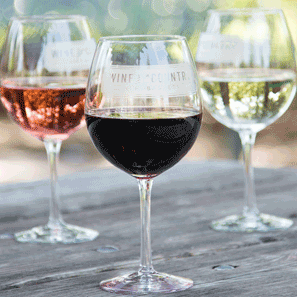Wine Tasting 101: A Beginner's Guide to Appreciating Wines
 Wine tasting is an enjoyable and enriching experience that allows you to explore the intricate flavors, aromas, and characteristics of different wines. Whether you're a complete novice or just looking to refine your palate, here's a beginner's guide to help you appreciate wines to the fullest:
Wine tasting is an enjoyable and enriching experience that allows you to explore the intricate flavors, aromas, and characteristics of different wines. Whether you're a complete novice or just looking to refine your palate, here's a beginner's guide to help you appreciate wines to the fullest:
1. Choose a Variety of Wines: Start by selecting a variety of wines to taste. Choose different types such as red, white, rosé, and even sparkling wines. Additionally, explore wines from various regions and grape varieties to understand the diversity of flavors and styles.
2. Use the Right Glassware: Use appropriate glassware for different types of wines. Generally, red wines are served in larger, rounder glasses, while white wines are served in slightly narrower glasses. This allows the aromas to be concentrated for a better tasting experience.
3. Look at the Wine: Observe the wine's appearance by holding the glass against a white background and tilting it slightly. Note the color, clarity, and viscosity. Younger wines tend to be brighter and have a purer color, while older wines might have more variation in color.
4. Smell the Aromas: Swirl the wine gently in the glass to release its aromas. Then, bring the glass to your nose and take a series of short, deliberate sniffs. Try to identify different scents like fruits, flowers, spices, and earthy notes. The wine's aroma can give you valuable insights into its characteristics.
5. Evaluate the Taste: Take a small sip and let the wine roll across your palate. Pay attention to the wine's body (light, medium, or full), acidity (how tart or crisp it is), tannins (found in red wines, they create a drying sensation in your mouth), and sweetness. Note the primary flavors you detect, as well as any secondary or tertiary flavors that may emerge.
6. Consider the Finish: The finish refers to the lingering taste after you've swallowed the wine. A long finish with pleasant aftertastes often indicates a higher-quality wine. Pay attention to how the flavors evolve as you breathe after swallowing.
7. Take Notes: Keep a wine tasting journal or use a wine tasting app to record your impressions. Note the wine's name, variety, region, color, aroma, taste, and overall impression. This practice will help you remember wines you enjoyed and track your evolving preferences.
8. Pair with Food: Experiment with pairing wines with different types of foods. Some wines complement certain dishes, enhancing both the wine and the food flavors. Generally, white wines go well with lighter dishes, while red wines pair nicely with heartier fare.
9. Practice Patience: Appreciating wine is a skill that develops over time. The more you taste, the more you'll be able to discern subtle nuances and differences between wines. Don't be afraid to explore and challenge your palate.
10. Attend Wine Tasting Events: Consider attending wine tasting events, classes, or winery tours. These experiences provide valuable insights from experts and offer opportunities to taste a wide range of wines.
Remember, wine tasting is a personal experience, and there are no right or wrong answers. The most important thing is to enjoy the journey of exploring different wines and developing your own palate.











